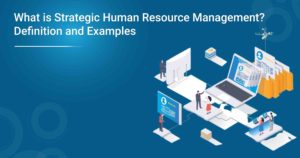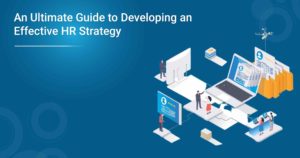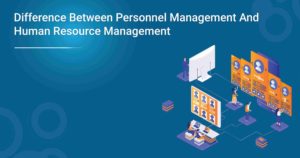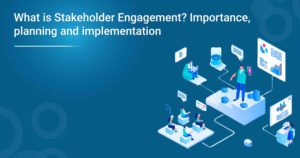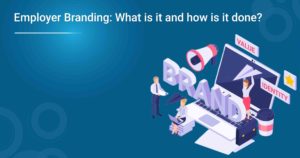Stress management in HRM is crucial for several reasons. First, it’s a preventative measure. By managing stress, you can prevent potential issues such as employee absenteeism, low productivity, and high turnover rates. Second, it’s an investive measure. By investing in stress management, you’re investing in your employees’ well-being. This will lead to a happier and healthier workforce, which will be more productive and have lower absenteeism and turnover rates. So why is stress management in HRM so important? Keep reading to find out!
What is Stress Management in HRM?
As the workforce continues to become more fast-paced and demanding, employers need to recognize the importance of stress management in HRM. Unfortunately, many businesses fail to see the link between employee productivity and stress levels.
When employees are overloaded with work or feel like they’re constantly under pressure, it can lead to burnout. This can hurt not only an individual’s health and well-being but also their job performance. Studies have shown that workplace stress is one of the leading causes of absenteeism and presenteeism.
So what is stress management in HRM? It’s a process that involves identifying, assessing, and addressing sources of stress within the workplace. This can be done through various methods such as developing policies and procedures to promote work-life balance, offering employee assistance programs, or providing training on stress management techniques.
By taking steps to manage workplace stress, employers can create a healthier and more productive environment for their employees. Not only will this lead to better individual outcomes, but it will also benefit the business as a whole.
What Are The Reasons For Stress In Workplace and How Does It Hinders Productivity?
Stress in the workplace is one of the major reasons for employee absenteeism and low productivity. It has been found that employees who are stressed are more likely to take more sick days, be less productive when they are at work and have a higher turnover rate.
Many factors can contribute to stress at work, such as long hours, heavy workloads, unrealistic deadlines, lack of break time, poor working conditions, and job insecurity. Stress can also be caused by interpersonal conflict with co-workers or supervisors.
Also Read: What is Strategic Human Resource Management? Definition and Examples
While some amount of stress is unavoidable, there are steps that employers can take to manage stress levels in the workplace and improve employee productivity. These include providing support and resources for employees experiencing stress, communicating openly about expectations and workloads, offering flexible work arrangements, and promoting a healthy work-life balance.
Importance And Significance of Stress Management in HRM
Stress management is crucial in HRM because it helps employees cope with the demands of their job and maintain a healthy work-life balance. When employees are stressed, they may experience anxiety, depression, irritability, and difficulty concentrating. This can lead to absenteeism, presenteeism, and turnover. Stress management interventions can help employees reduce their stress levels and improve their productivity.
Benefits Of Employee Stress Management And How It Contributes To Success
Employee stress management is critical to success for several reasons:
- When employees are stressed, they are less productive. This can lead to missed deadlines, errors, and other issues that can impact the bottom line.
- Stress can lead to absenteeism and presenteeism, which can further impact productivity and profitability.
- Employee stress has been linked to a host of health problems, including heart disease, anxiety, and depression.
By managing employee stress, organizations can improve productivity, profitability, and employee health.
Smart Techniques For Employee Stress Management
Stress management is critical for employees in HRM because it can help to improve communication, increase productivity, and reduce costs. Several techniques can be used to manage stress in the workplace. These include:
- Improving communication: This can be done by ensuring that employees have a clear understanding of their roles and responsibilities. This can be achieved through regular meetings and clear job descriptions.
- Increasing productivity: It is done by setting realistic goals and expectations and providing employees with the resources they need to meet these targets.
- Reducing costs: This can be achieved by reducing or removing unnecessary stressors from the workplace. This might include things like unrealistic deadlines, excessive workloads, or poor working conditions.
1. Rewards & Recognition Culture
It is no secret that employee recognition is one of the most powerful tools in a manager’s toolkit. When used effectively, rewards and recognition can improve employee engagement, motivation, and productivity. A study by the Society for Human Resource Management found that 78% of employees say that being recognized for their work is motivating.
Unfortunately, many companies still have not understood the importance of effective rewards and recognition culture. In a recent survey by WorldatWork, only 60% of respondents said their organization had an effective strategy for recognizing employees. This means that there is still a lot of room for improvement when it comes to stress management in HRM. The good news is that creating a rewards and recognition culture is not as difficult as it may seem. Here are a few tips to get you started:
Make sure your entire team is on board
Before you start implementing any changes, it’s essential to make sure that your whole team is on board with the idea of a rewards and recognition culture. If you try to implement changes without buy-in from your team, you’re likely to encounter resistance.
Define what success looks like
It’s important to have a clear idea of what you want to achieve with your rewards and recognition strategy. Do you want to improve employee engagement? Boost morale? Increase productivity? Once you know what success looks like, you can
2. Mental Health Sessions
Mental health is often viewed as a taboo topic in the workplace. However, with the recent rise in awareness of mental health issues, more and more companies are beginning to offer mental health services to their employees. Mental health sessions provide a safe space for employees to talk about their mental health with a trained professional.
These sessions can help employees to identify stressors in their life and develop coping mechanisms to deal with them. In addition, mental health sessions can also provide employees with tools to manage their anxiety and depression.
Mental health sessions are crucial for HR professionals because they can help to identify employees who are struggling with their mental health. Additionally, these sessions can help to create a more supportive work environment for all employees.
Also Read: Breaking Down The Scope Of Human Resource Management
3. Flexile Work Schedule/ Work-Life Balance
It’s no secret that working long hours can lead to burnout. Studies have shown that employees who work more than 40 hours a week are at greater risk for developing health problems like anxiety and depression.
That’s why it’s so important for companies to offer flexible work schedules and promote work-life balance. By allowing employees to adjust their work hours to better fit their schedules, companies can help reduce stress and improve productivity.
In addition, offering perks like paid time off for doctor’s appointments or errands can also show employees that their company cares about their well-being. This can go a long way in reducing stress levels and promoting a healthy work-life balance.
4. Health And Safety Measures
When it comes to managing stress in the workplace, there are a few key things that HR professionals need to keep in mind. First and foremost, it’s important to create a healthy and safe work environment for employees. This means having clear policies and procedures in place regarding health and safety concerns.
It’s also important to provide employees with the resources they need to manage their stress levels. This might include access to mental health services, relaxation techniques, or even just regular check-ins with their supervisor.
Finally, HR professionals need to be aware of the signs of stress in the workplace. These can include changes in behaviour, productivity levels, or even physical symptoms. By being attuned to these signs, HR can take action to help employees before things get too out of hand.
5. Encouraging Growth Management
Employee stress is one of the leading causes of absenteeism and turnover in the workplace. As an HR manager, it’s important to encourage growth management practices that can help reduce stress levels for your employees. Some simple things you can do to encourage growth management include:
- Providing opportunities for employee development and training.
- Encouraging employees to take on new challenges and responsibilities.
- Supporting employees in achieving work-life balance.
- Promoting a healthy lifestyle for employees through wellness programs.
- Recognizing and rewarding employees for their hard work and dedication.

6. Conflicts Resolutions
In any workplace, conflict is bound to arise between employees. It is the job of HR to resolve these conflicts in a way that is fair to all parties involved and doesn’t adversely affect company morale.
There are a few different methods that can be used to resolve conflicts in the workplace. The first is mediation, which involves HR meeting with both parties involved in the dispute and helping them come to a resolution between themselves.
If mediation is unsuccessful or not an option, the next step is arbitration. This involves bringing in an impartial third party to hear both sides of the argument and make a binding decision on the matter.
The last resort for conflict resolution is litigation, which should only be used as a last resort when all other options have failed. This involves taking the matter to court and letting a judge or jury decide on the matter.
Whichever method of conflict resolution is used, it must be done in a way that is fair to all parties involved and doesn’t damage company morale.
7. Regular Surveys And Feedback
Another important stress management tool for HR professionals is to conduct regular surveys and collect feedback from employees. This can be done through annual performance reviews, exit interviews, or even just informal check-ins with employees.
The purpose of these surveys is to identify any areas where employees are feeling stressed or unhappy in the workplace. Once these areas have been identified, HR can take steps to address them and make changes to reduce stress levels for employees.
The ideal way to collect feedback from employees is to make it easy and convenient for them. This might mean using an online survey tool or setting up a dedicated email address for employees to submit their feedback.
By collecting regular feedback from employees, HR can stay on top of stress levels in the workplace and make changes to address any issues.
8. Promoting A Positive Work Culture
One of the best ways to reduce stress in the workplace is to promote a positive work culture. This includes things like having a clear vision and values for the company, fostering open communication, and encouraging a sense of camaraderie among employees.
A positive work culture can go a long way in reducing stress levels for employees. When employees feel like they are part of a positive and supportive work environment, they are more likely to be happy and productive.
HR plays a crucial role in promoting a positive work culture. By setting the tone and creating policies and programs that support a positive work environment, HR can make a big impact on the productivity of employees.
There should be a stress management policy in place that employees can reference if they are feeling overwhelmed. This policy should outline the different stress management resources and services that are available to employees.
HR should also make sure that employees are aware of the stress management resources and services that are available to them. This can be done through regular communication, such as emails, newsletters, or posters.
Conclusion
No one can work at their true potential with stress weighing them down. To create a productive workplace, stress management must be a priority for HRM departments. By taking proactive measures to address stress, HRM can create a more positive work environment and lead to increased productivity and engagement from employees.
Stress management is crucial in HRM because it helps to ensure that employees can cope with the demands of their job. It can also help to improve employee productivity and morale. Several stress management techniques can be used in HRM, such as providing support and training to employees, encouraging open communication, and stress-relieving activities.
It is important to remember that stress management is not a one-size-fits-all solution, and what works for one employee may not work for another. It is important to tailor stress management solutions to the individual needs of each employee.
Those interested in knowing more about this can join the Post Graduate Certificate Course in Human Resource Management.
More Information:
Key Objectives of Human Resource Management
Objectives & Nature of Human Resource Management
Evolution Of Human Resource Management: Past and Future
Better employee relation can lead to a rapid business expansion: Know 11 Tips








